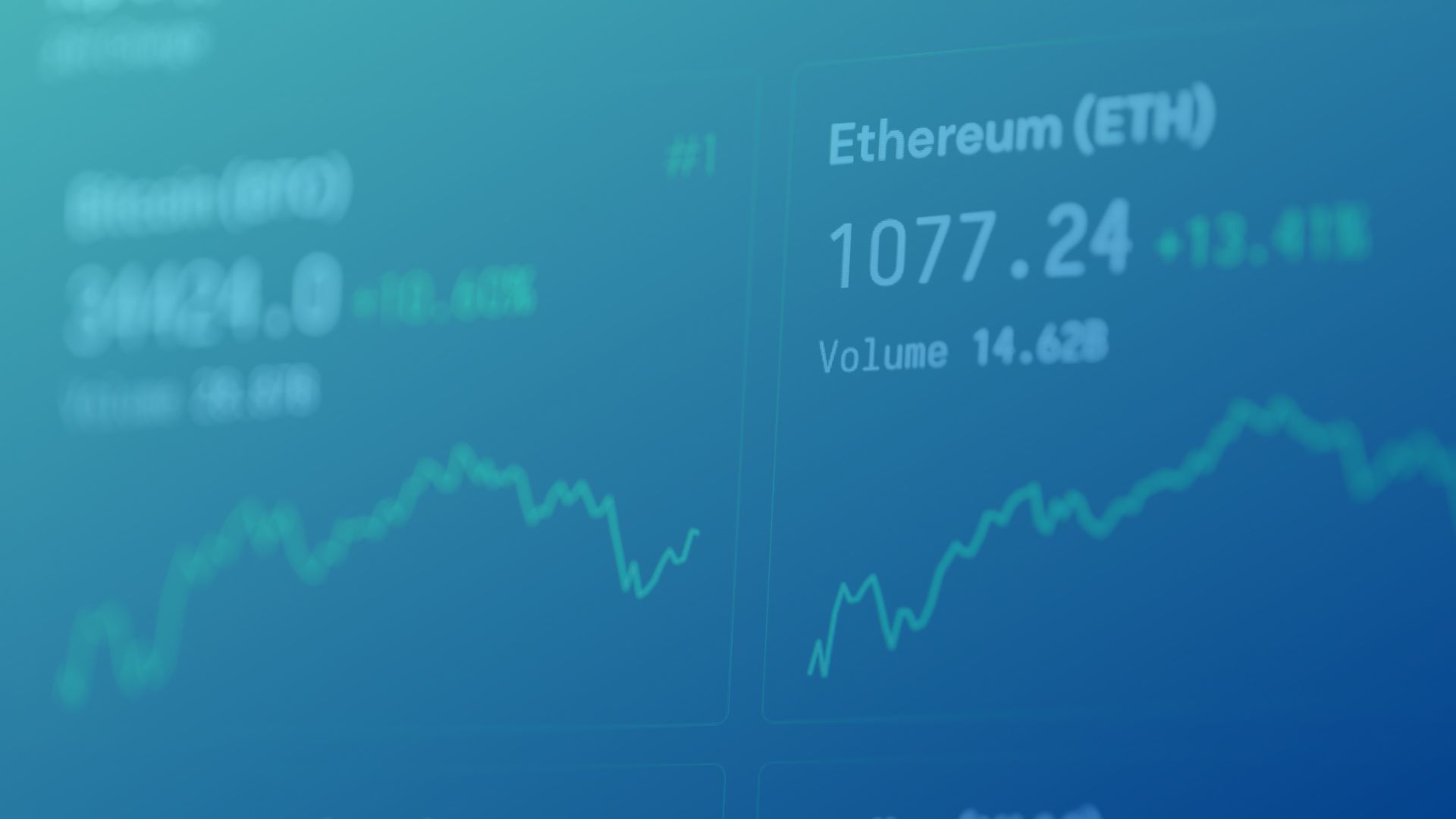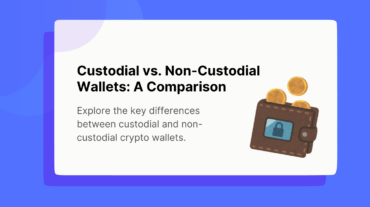To understand the differences between centralized finance (CeFi) and decentralized finance (DeFi), it is first necessary to define both.
The centralization of finance refers to the traditional system of controlling financial resources by a central authority, such as a bank or government. A new approach to finance built on blockchain technology and relying on cryptography for security and transparency is DeFi.
CeFi – what is it?
As cryptocurrencies grow, innovative financial services like CeFi, which stands for Centralized Finance, are emerging. The CeFi model in crypto is based on the traditional financial model, where an intermediary or centralized organization facilitates various services, such as loans, trading, and savings, by acting as an intermediary. CeFi platforms, however, operate using digital assets such as Bitcoin, Ethereum, and other cryptocurrencies.
While CeFi may seem counterintuitive to the decentralized nature of cryptocurrencies, it provides a familiar and user-friendly gateway for newcomers to the digital asset space. It provides the benefits of professional management, access to sophisticated financial products, and enhanced security provided by these centralized entities.
In conclusion, CeFi in crypto illustrates the continuous evolution of the financial landscape and its adaptation to the growing influence of cryptocurrencies worldwide.
CeFi: What Are Its Benefits?
A major advantage of centralized finance is its ease of use. As all transactions and decisions are controlled by one central authority, users can access their funds quickly and easily. Since CeFi usually protects customers’ money from fraud and theft, it gives them more control over their finances in a simple way. A CeFi system’s customer service team can also help users resolve account issues quickly if they arise.
DeFi: what is it?
With DeFi or Decentralized Finance, users can access various financial services without relying on traditional centralized institutions like banks.
Blockchain technology gives DeFi a new level of autonomy and flexibility, as well as increased transparency and security.
Through this financial ecosystem, users can borrow digital assets, trade tokens on decentralized exchanges, and earn interest on digital savings accounts. Remarkably, all of these financial transactions can be conducted peer-to-peer without intermediaries or middlemen, resulting in reduced fees and faster transactions.
DeFi has tremendous potential to reshape the financial landscape and empower individuals worldwide with unprecedented access and control over their financial assets as it continues to evolve and attract global interest.
DeFi: What Are Its Advantages?
Compared to CeFi systems, decentralized finance offers several advantages. Due to its blockchain-based design, DeFi eliminates needing a third-party intermediary to process transactions.
Users can make secure payments without worrying about potential security risks associated with centralized services.
Additionally, DeFi systems are open source, so anyone can view the code that powers them and ensure that they remain secure and reliable.
Furthermore, since smart contracts are written in code, users can be sure that their investment choices will be executed exactly as intended without fear of manipulation.
DeFi vs. CeFi: A comparison
Decentralized finance (DeFi) and centralized finance in the cryptocurrency have different advantages and trade-offs.
Using smart contracts to facilitate financial transactions, DeFi primarily operates on blockchains as a self-contained economic system. It creates new liquidity pools that allow users to invest from anywhere.
Meanwhile, centralized finance (CeFi) depends on external institutions like traditional banks and can be subject to regulations or single points of failure. Since regulated entities authorize transactions through CeFi, it tends to provide greater security.
In the end, both forms of finance offer unique benefits and drawbacks. Choosing between them requires carefully considering your needs and preferences concerning secure and quick transfers of crypto funds.
The features of CeFi
In the world of cryptocurrencies, centralized finance, commonly known as CeFi, combines the technological advancements of blockchain with a centralized management system. CeFi is characterized by third-party intermediaries, such as banks or exchanges, controlling users’ funds and transactions.
Since these intermediaries are often regulated entities, this central authority helps manage risks and provides a layer of security to customers.
Due to their resemblance to traditional financial institutions, CeFi platforms offer a familiar user experience, making them more accessible to new adopters.
Customer support is another noteworthy aspect of centralized finance, which can be crucial when working through cryptocurrency issues.
The centralized nature of CeFi offers users a familiar and secure environment for embracing the world of cryptocurrencies while taking advantage of traditional financial structures.
The features of DeFi
With DeFi, blockchain technology is revolutionizing finance by creating an ecosystem that is accessible, transparent, and free from traditional financial intermediaries. As a result, users have complete control over their assets, eliminating the need for middlemen like banks or financial institutions.
DeFi supports various financial services, such as lending, borrowing, and staking, that users can access regardless of location or socio-economic status.
Additionally, smart contracts play a crucial role in the DeFi landscape, providing customizable financial agreements executed automatically and securely when predetermined conditions are met. DeFi’s decentralized nature promotes innovation and inclusivity, inspiring financial expansion and enabling greater opportunities.
The risks associated with CeFi
The rapidly evolving world of cryptocurrency presents several risks associated with CeFi or centralized finance.
Centralized finance exposes investors to risks such as hacking, fraud, and mismanagement because it entrusts the custody and management of digital assets to one authority. By keeping the inner workings of their systems hidden from public view, CeFi lacks the transparency that decentralized finance (DeFi) offers. Because of this, investors may not be aware of the full extent of the risks associated with CeFi lending and borrowing.
The centralization of CeFi projects can also make them more easily targeted by regulatory agencies, leading to abrupt changes, hindrances in daily operations, or even closures. Before investing in CeFi, those considering centralized finance should know these inherent risks and assess if they are acceptable.
Learn more: CeFi Risks
The risks associated with DeFi
The world of Decentralized Finance (DeFi) in cryptocurrency has taken the financial sector by storm, providing a variety of innovative platforms and investment opportunities. However, investors should be aware that DeFi does come with its fair share of risks despite its meteoric rise.
Since DeFi platforms rely on complex coding to execute transactions, even a small error or loophole can cause substantial financial losses. Moreover, DeFi’s largely unregulated nature raises concerns about fraud, which can lure unsuspecting investors with promises of high returns only to disappear with their funds.
A high level of volatility in the cryptocurrency market also increases the risk of impermanent losses, particularly for participants in liquidity pools. In addition, DeFi’s reliance on digital infrastructure makes it vulnerable to cyber-attacks or infrastructure failures, which could negatively impact the entire ecosystem’s stability.
Finally, while DeFi offers new opportunities, investors must be cautious and do their due diligence to navigate the associated risks.
Learn more: DeFi Risks
Which is better, CeFi or Defi?
In the world of cryptocurrency, DeFi (Decentralized Finance) and CeFi (Centralized Finance) represent two distinct approaches.
While the debate on which is better continues, it is essential to note that each has its own advantages and challenges.
In addition to its decentralized nature, DeFi allows users to access financial services without the involvement of traditional financial institutions. The result may be not only the democratization of finance but also an increase in individual security and control.
However, CeFi platforms offer the advantage of being managed by experienced professionals who ensure compliance with regulations and provide reliable infrastructure, enabling more stability.
DeFi and CeFi cater to user preferences and requirements, so the choice ultimately comes down to personal preference and trust in the underlying platform. We may see a balance between these two forms of finance as the cryptocurrency landscape evolves or even hybrid models that incorporate the best of both.
Final thoughts
While centralized finance has been around for centuries and offers certain advantages compared to decentralized finance solutions, technological advances make DeFi increasingly attractive for those seeking greater transparency and control. It is ultimately up to you to decide which type of system will work best for you; however, understanding how each work will help you make an informed decision.




